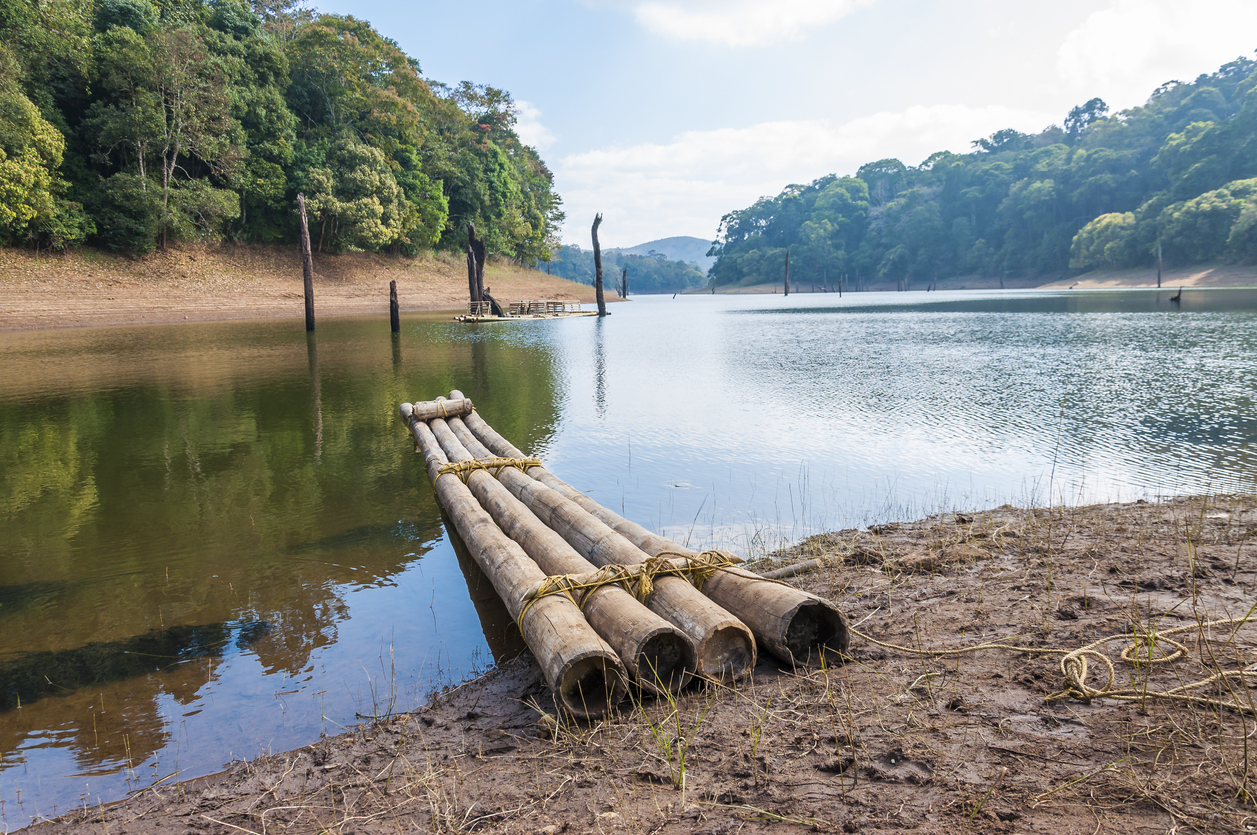
Centre's draft on Western Ghats eco zone a political hot potato in Kerala

The Centre’s recent draft notification on an ecologically sensitive zone (ESZ) around the Wayanad Wildlife Sanctuary, has drawn criticism from political parties and residents of the Western Ghats.
There was widespread protests against the implementation of the Gadgil committee report a few years ago across the farming population in the hilly terrains of Kerala. And now the locals of Western Ghats are protesting against the delineation of ESZ around the Wayanad Wildlife Sanctuary.
While the Congress-led UDF called a ‘hartal’ or shutdown on Monday, the LDF was seen holding demonstration against the proposed notification.
Related news: Centre’s draft notification on ESZs triggers protests in Kerala
Under the draft document, the Centre has notified 118 km of land circling the sanctuary from outside as ESZ.
While those living on the edge of the forest say the decision will affect their livelihood, it is being alleged that the Centre has not taken the concerns expressed by the state with regard to the inclusion of human settlements in the buffer zones.
For example, the Centre-appointed expert committee has rejected the state’s proposal that completely excluded the human settlement areas around the three sanctuaries in Thattekad, Aralam and Idukki, from the ESZ. In the case of Thattekad, Kerala has marked zero ESZ on the eastern and south-eastern side of the Thattekad Bird Sanctuary and on the south-western side of the Aralam Wildlife Sanctuary, considering the high density of population there. However, in a meeting last month, the expert committee had asked the state government to reconsider this proposal and make necessary changes and to realign the ecologically sensitive zones.
The parameters of the ecological sensitivity is decided based on the recommendations of the Pranab Sen Committee report submitted in 2000 and also the principles laid down by the Supreme Court in Goa Foundation Vs Union of India decided in 2006. Based on the same, all the states were asked to submit reports on the ecologically sensitive zones in their respective forest areas.
“This has been a hot political issue ever since then,” says advocate Harish Vasudevan, a lawyer and environmental activist.
“Political parties, both part of LDF and UDF, have always assured people living in the Western Ghats, that their land will not be touched and thus never taken any step to assess the ESZ. No one wanted to burn their fingers,” says Harish.
A committee of three legislative members was formed in the tenure of the last UDF government and it submitted recommendations on ways to determine an ecologically sensitive zone.
Harish says that the present LDF government also has been following the same. “No quarries and rock mining is allowed within one kilometre of a wild life sanctuary,” he says. “Even though there are no quarries within this prohibited limit, there are many in close range. That is one of the factors behind this reluctance (to delineate ESZ),” he adds.
“Another problem is the flood of misleading information,” says Dr TV Sajeev, scientist at Kerala Forest Research Institute. “People are scared that they will lose the control over their lands, there will be restrictions on farming, the resale of the land will be difficult etc. There is no conscious effort to make people understand the facts,” says Sajeev.
According to experts, the uniformity in parameters also needs to be re-examined. Each wildlife sanctuary has different species of protected animals and the buffer zones need to be finalised accordingly. The Pranab Sen committee defines ecological sensitivity as the “imminent possibility of permanent and irreparable loss of extant life forms from the world; or significant damage to the natural processes of evolution and speciation”.
According to the draft notification published by the ministry last week, the ESZ of Waynad Wildlife Sanctuary will cover an area of 118.59 km which includes 8.89 km of the Thirunelly reserve forest of north Wayanad and 17.67 km of Chedelaythu range in south Wayanad. This includes several human settlements with a very high population. The human animal conflict also is very high in the forest regions in Wayanad and other parts of the Western Ghats.
Related news: Man-wild conflict in Wayanad triggers debate on tiger reserve, ouster of tribes
Unlike farmers and political parties who have slammed the Centre’s draft notification, environmental activists have welcomed it.
“It has been a long pending demand to protect the buffer zones of the wildlife sanctuary. This will considerably reduce the human animal conflict as well,” says Badusha, an activist of Wayanadu Prakruthi Samrakshana Samithi.


